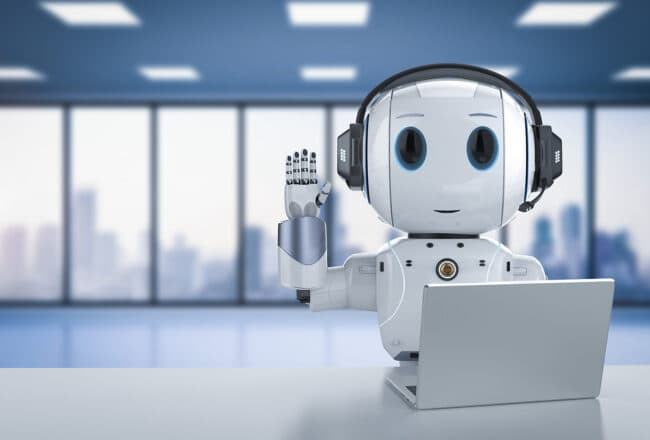The Impact of AI on Modern Communication - a Curse or a Blessing?
11. Apr 2024 | 3 min.
11. Apr 2024 | 3 min.

AI (Artificial intelligence) has found its way into our everyday interactions in recent years – from voice assistants such as Siri and Alexa to smartwatches and professional communication. Technology companies such as Cisco and Microsoft are increasingly relying on AI innovations in their communication platforms to enable users to communicate and collaborate more successfully.
In this article, we use practical examples to show how AI-supported functions are improving the working and communication experience and what changes this brings to the way we work.
Artificial intelligence is present everywhere in virtual meetings and is constantly improving the meeting experience. Intelligent real-time translations into different languages, intuitive voice controls to reduce distracting background noise and the ability to use virtual backgrounds are just a few examples of the use of AI. And new features are constantly introduced.
I find the automatic face recognition is particularly useful when there are several people in a virtual meeting room. As a remote participant, I can always see the correct name as soon as someone speaks in the room. This is particularly helpful for new colleagues or external participants.

In larger meeting rooms, it is often an issue that remote participants in hybrid meetings have difficulty following the discussions in the room. The goal is, of course, to integrate all participants equally. An AI-supported solution was also found here: Using intelligent audio and video tracking in the room, several cameras can be controlled so that they focus on the participants who are speaking. This allows remote participants to follow a meeting in an optimal way. Regardless of who is speaking in the room. These “Cinematic Meetings” are part of Cisco’s “Video Intelligence”.
The latest features go even further to improve audio and video quality. With the new AI Audio Codec, Cisco can intelligently reconstruct lost audio packets, saving a lot of bandwidth. This is a big help with poor network connections. Video images can also be transmitted over narrow bandwidths thanks to the new “Super Resolution” feature. The image to be transmitted is downscaled by 90 % and then upscaled to 100 % at the end, and the results are truly amazing in my opinion.

With the goal of making customer service more efficient and reducing the workload of employees, AI is also widely used in contact centres. For example, through the use of chatbots that offer customers a direct self-service path. In addition, real-time transcriptions and summaries of customer conversations make agents’ work much easier. Even conversation guidelines and checklists are supported by AI by automatically recognising and processing relevant topics during the conversation. This significantly increases efficiency and professionality in many areas.
AI now even recognises the mood of the caller while they are waiting on hold. Or even the chat protocol if the caller has already spoken to an agent. This data enables the contact centre to make informed decisions about which employee should take over the call in order to help the customer as quickly as possible. Perhaps someone who has already completed a de-escalation seminar? Or someone with a high level of technical expertise, if the AI has determined that deeper know-how is required to solve the case. However, AI can use such intelligence not only to look after customers, but also the contact centre agents themselves. One of the latest features is “burnout detection”, which recognises stress in the agent and suggests appropriate measures, such as breaks.
The examples show that AI is becoming a more established part of the collaboration portfolio and is already helping us in many areas. Many AI features address the challenges of digital collaboration and add immediate value. While AI has enabled significant advances in collaboration platforms, it is important to ensure that its use remains meaningful and efficient, not just for its own sake. To provide a framework for this, Cisco, for example, recently published a Responsible AI Framework. This makes it clear that they are taking an inclusive approach to working with AI. They want to enable people around the world to work together regardless of language, gender or age. The framework also intends to reduce resentment towards AI.
In any case, it is also important to consider the challenges and potential risks associated with the use of artificial intelligence. The topics of data protection, ethics and IT security should be mentioned here. If these issues are given proper consideration in the further development of artificial intelligence, it can be ensured that AI will continue to improve our communication and collaboration and make work processes more efficient and enjoyable for everyone involved. Overall, I think the developments are very positive and I am excited to see what will happen in the future.